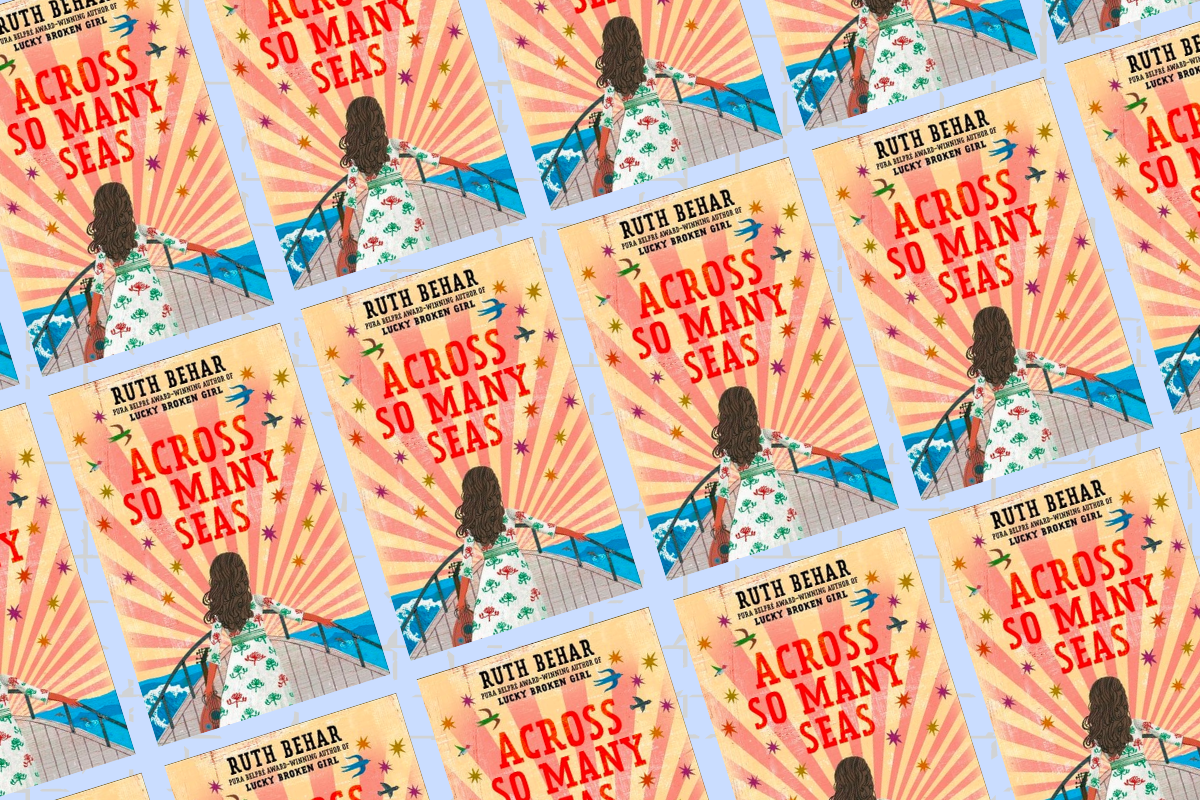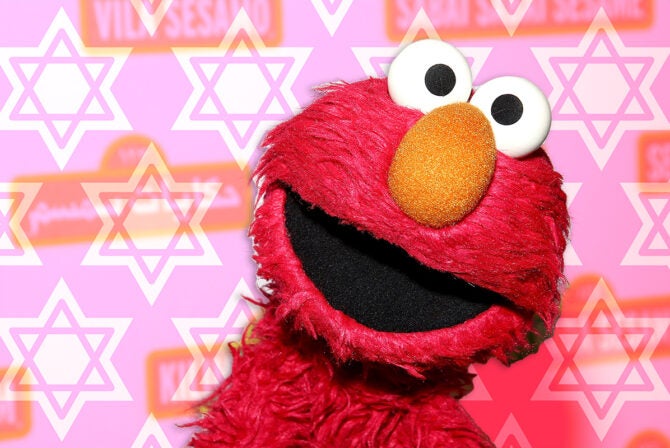Ruth Behar is no stranger to making history accessible to young readers. But her latest novel for middle grade readers might be her most ambitious yet.
In “Across So Many Seas,” due out in February, Behar tells a story of exile and return, of four generations of strong-willed girls longing for freedom, and of the timeless struggle to navigate the world without losing touch with your Judaism. “I have always been fascinated,” she says, “by the idea of what gets passed on, and what is left behind.”
Spanning over 500 years and four different countries, it is a moving and hopeful novel that I personally have been craving as a Jewish parent. Given the current climate, I really appreciate Behar’s ability to create positive and uplifting Jewish stories that handle serious topics like antisemitism with age-appropriate sensitivity and broad appeal.
Behar’s orientation as a Jewish-Cuban-American cultural anthropologist makes her books uniquely fascinating to both Jewish and non-Jewish readers. From “Lucky Broken Girl,” a story based on her experience as a young immigrant in New York City, to “Letters from Cuba,” a story inspired by her Polish grandmother’s immigration to Cuba on the eve of World War II, Behar’s books weave together her own Jewish history alongside messages of inclusivity, multiculturalism and tolerance.
“Across So Many Seas” takes that torch and runs with it.
Recently, I spoke with Behar about her new book, why now (more than ever) it’s so important to have Jewish representation in fiction, and what we can learn from the stories of our past.
This interview has been condensed and lightly edited.
Can you talk about the inspiration for this book?
I got into the story by thinking about my Sephardic grandmother, who I called Abuela. She was sent alone from Turkey to Cuba by her parents, bringing along an oud on which she played Sephardic songs that she sung in Ladino. No one in our family knows exactly why they shipped her off across the sea.
That mystery inspired me to write, but I felt that I needed a broader canvas to tell her story and give it context, so I decided to look back 500 years to the expulsion of the Jewish people from Spain, and to look forward to what remains of that past in the present. That’s why the novel starts in 1492, and it’s told from the point of view of four different characters, living in four different places, in four different historical eras.
I love the way you tie the generations together with recurring motifs like the Ladino song each girl sings and the food traditions that follow them through the years.
Thank you! I love Ladino songs and Sephardic food traditions, two important ways that I connect to my heritage. I realized from the start that the songs would be the link between the girls. That was inspired by an observation made by a Spanish priest who witnessed the departure of the Jewish people in 1492. He wrote that the rabbis encouraged women and young people to sing as they left.
Songs were there from the beginning, giving comfort and hope to the Jewish people, and they connect us to that historical memory. And then food, that is what nurtures us from generation to generation. I was so enamored of my Abuela’s cooking – the borekas, the lemon she squeezed on all the food so it was just right, her delicious eggplant and the honeyed baklava. And in Toledo, the scent of the almonds from the marzipan just swept me away, and I could imagine these sweets being relished 500 years ago as they still are today.
Your book is so full of hope, but it covers some intense topics like misogyny, exile, death and antisemitism. How were you able to find the right balance to make it accessible for your middle grade readers?
There is, as well, the sorrow of displacement and the search for home which is experienced profoundly. I think the presence of the Sephardic songs, which are both so sad and so beautiful, helped to create that balance. In moments of despair and loss, the sweet hum of a lullaby is comforting, or when feeling lost, the lyrics of heartbreak, found in the song about the girl alone in a tower in the sea, lets you imagine a brighter future and the possibility of freedom.
In the wake of October 7 and the subsequent spike in Jewish hate around the world, so many Jewish parents are having to talk to their kids about antisemitism. How do you see this book contributing to the conversation?
I think it can help kids understand the historical depth of antisemitism. In Spain, fierce Jewish hate in 1492 led to the actual expulsion of Jewish people. Expulsion was an early form of deportation and forced uprooting that was never forgotten by the Sephardic Jews. And yet the Sephardic community, throughout the centuries, refused to be filled with hatred and rancor, and chose to remember their lost home in Spain with nostalgia. They held onto the Spanish language, which became Judeo-Spanish, the language of their Jewishness, and they held onto the love songs and the lullabies, and in this way turned their sorrow into joy, and transformed their identity into one of pride in their heritage.
I hope my book can help kids to respond to Jewish hate with an awareness of the resilience of our ancestors and the strength we have today to speak back to antisemitism with knowledge, education and illuminating stories.
Can you talk a little about representation in fiction? Why is it so important for Jewish kids to read stories like this one?
We have few stories in American literature about Sephardic young people or about Jewish Latina/Latino/Latinx kids. There’s a beautiful heritage that comes from Spain and the other América across the border. Ladino, which Spanish Jews carried out of Spain when they were expelled and that gradually incorporated words from the languages of their various diasporas, is an intangible part of that heritage. I feel kids need to know about this history to expand their map of the world and their understanding of how Jewish people created a sense of home in numerous places and brought their traditions with them wherever they went. The diversity of the Jewish experience helps Jewish kids to see that they belong in the whole wide world.
Although this story is most definitely Jewish, you bring in many characters from other cultures, both mainstream and marginalized. It feels very inclusive. Why was that important to you? How does that reflect on the Jewish experience?
I’m interested in how cultures connect and intersect and still maintain their uniqueness. I’m interested in how people of different communities can coexist peacefully, and how as individuals we can have hybrid identities. Being a mix of Ashkenazi and Sephardic made me conscious of hybridity long before I knew that word.
In my book, we see these identities taking form in the first part, in 1492, when Benvenida’s own family has become divided, and some have chosen to convert to Catholicism to remain in Spain, while she and her parents and brothers have chosen to remain Jewish and so must leave Spain. In the second part, Reina develops a friendship with a Muslim boy, and in the third part, Alegra develops a friendship with an Afro-Cuban girl. In the fourth part, Paloma, a Sephardic Cuban and Afro-Cuban, is navigating those two identities. I imagine Jewish people living in relationship to others in our ever more diverse society. I want to imagine that peaceful and loving coexistence is complex but possible.
Each girl goes on a journey across the sea, but only your last character, Paloma, knows she will be able to return home. It’s a beautiful evolution from exile to freedom.
I named Paloma after the dove of peace and imagined from the beginning that she would be the one to lead the family on their journey to Spain and then bring everyone safely home. She is a deep listener and the memories of her family and the ancestors will be safe with her. Yet I don’t see her as burdened by the past. She represents freedom. I gave her wings to fly and an open heart filled with song.
“Across So Many Seas” will be released on February 6. You can order it here.








